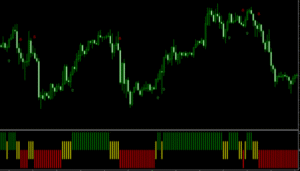
Vanguard S&P 500 Index Fund
The financial world thrives on complexity. Wall Street experts use advanced analytics, computer models, and endless jargon to convince investors that only they can deliver superior results. Yet when the numbers are examined, it becomes clear that complexity is not the key to wealth creation. A disciplined financial planning strategy that emphasizes simplicity, low costs, and patience often outperforms the majority of actively managed funds.
This isn’t a new idea—it’s a proven truth backed by decades of data. Ordinary investors who follow simple, low-cost strategies regularly surpass the results of professionals who trade frequently and charge high fees. By using tools like the Vanguard S&P 500 Index Fundor any low-cost S&P 500 index fund, individuals can achieve long-term success without needing Wall Street’s predictions.
The Problem With Wall Street Expertise
At first glance, it seems logical to trust experts. Fund managers are highly educated, have access to real-time data, and dedicate their lives to analyzing markets. Yet despite all this, most fail to outperform simple benchmarks like the S&P 500 over long periods.
The reasons are straightforward:
- High costs eat into returns year after year.
- Frequent trading creates taxable events and additional expenses.
- Short-term pressure forces managers to make decisions that look good now but harm long-term growth.
This system benefits Wall Street, not investors.
Why Simple Strategies Work
The secret to simplicity is not what it does—it’s what it avoids. A simple plan reduces the opportunities for mistakes, minimizes costs, and removes the emotional burden of constant decision-making.
When you commit to one low-cost, broad-based fund, you automatically diversify, reduce risk, and gain exposure to the entire market. Instead of attempting to beat the market, you capture it, letting compounding do the heavy lifting.
The S&P 500: A Benchmark of Strength
The S&P 500 is one of the most important financial benchmarks in the world. It tracks 500 of the largest publicly traded companies in the United States across sectors like technology, healthcare, energy, and finance.
By investing in a fund that tracks this index, you gain exposure to household names such as Apple, Microsoft, Johnson & Johnson, and Procter & Gamble. More importantly, you benefit from the natural evolution of the index—weak companies are replaced by stronger ones, ensuring that the fund continues to reflect the leaders of the economy.
Over the past century, the S&P 500 has delivered an average annual return near 10%. Despite recessions, wars, and crises, the long-term trend has always been upward.
Vanguard S&P 500 Index Fund: A Turning Point
When John Bogle launched the Vanguard S&P 500 Index Fund in 1976, critics dismissed it as a foolish idea. Why settle for average returns when you could pay for experts to outperform? But history has proven Bogle right.
The fund became a game-changer because it:
- Offered market-level returns at minimal cost.
- Allowed everyday investors to participate without excessive fees.
- Was built on a structure that prioritized investors rather than outside shareholders.
Decades later, it remains one of the most trusted investment options worldwide.
Why a Low-Cost S&P 500 Index Fund Outperforms
Alow-cost S&P 500 index fund provides a massive advantage: it doesn’t drain returns with fees. While a 1% expense ratio might seem insignificant, over 30 years it can reduce your portfolio by hundreds of thousands of dollars.
Here’s a simple illustration: two investors contribute $10,000 annually for 30 years, earning 10% before fees. One pays 0.04% annually, while the other pays 1%. The low-cost investor retires with close to $2 million, while the other falls far short.
The difference is not in performance—it’s in cost.
Compounding: Simplicity’s Superpower
Compounding is the true driver of wealth. It’s the process of reinvesting earnings so that returns generate their own returns. Over decades, this snowball effect turns modest contributions into substantial wealth.
A $500 monthly investment with an average 10% return grows to nearly $1 million in 30 years. With 40 years, it more than doubles. The earlier you start and the longer you stay invested, the more powerful compounding becomes.
By minimizing costs and avoiding frequent trading, index funds give compounding the freedom to work at its maximum potential.
Dollar-Cost Averaging: Staying Consistent
Investing is as much about behavior as it is about numbers. Market downturns tempt investors to sell in panic, while bull markets encourage buying at inflated prices. Both actions hurt long-term results.
Dollar-cost averaging (DCA) helps solve this. By investing the same amount at regular intervals, you build discipline and reduce emotional decision-making. When markets fall, you buy more shares; when they rise, you buy fewer. Over time, this balances your cost and ensures steady accumulation.
Paired with an index fund, DCA is one of the simplest ways to build wealth without stress.
Tax Efficiency: A Hidden Advantage
Another strength of index funds is tax efficiency. Because they trade infrequently, they generate fewer taxable capital gains than actively managed funds.
When held in tax-advantaged accounts like 401(k)s, IRAs, or Roth IRAs, the benefits are even greater. Dividends and gains compound without immediate tax obligations, accelerating wealth creation. Even in taxable accounts, index funds still minimize the drag of taxes compared to their active counterparts.
Managing Risk Without Overcomplication
No investment is risk-free, but the S&P 500 mitigates much of it through diversification. Instead of owning a handful of companies, you hold 500. If one fails, others in the index offset the loss.
Investors can also manage risk by adjusting allocations as they age. Younger investors may lean heavily on equities, while older investors can gradually introduce bonds for stability. Importantly, none of this requires complicated products or strategies.
Why Wall Street Loses to Simplicity
Wall Street professionals operate under pressure to justify fees and outperform benchmarks. This leads to excessive trading, higher expenses, and short-term focus. Most fail to beat the index consistently.
Meanwhile, individual investors with simple, low-cost plans thrive. Their advantage isn’t insider knowledge—it’s the patience to stick with a strategy that works.
A Real-World Example
Suppose an investor began putting $250 per month into an S&P 500 index fund in 1990. Over the next 35 years, they faced recessions, the dot-com crash, the 2008 financial crisis, and the COVID-19 pandemic. Despite these challenges, their portfolio grew to well over $600,000 by 2025.
This outcome wasn’t built on predictions or market timing. It was the result of low fees, compounding, and consistent contributions.
Conclusion
The evidence is overwhelming: a straightforward financial planning strategy outperforms the complexity sold by Wall Street experts. By focusing on simplicity, consistency, and low costs, investors position themselves for long-term success.
With tools like the Vanguard S&P 500 Index Fund or another low-cost S&P 500 index fund, you gain exposure to America’s largest companies, minimize expenses, and let compounding create exponential growth.
Simplicity doesn’t just compete with Wall Street—it beats it. For the disciplined investor, patience and clarity are the most powerful wealth-building tools available.








